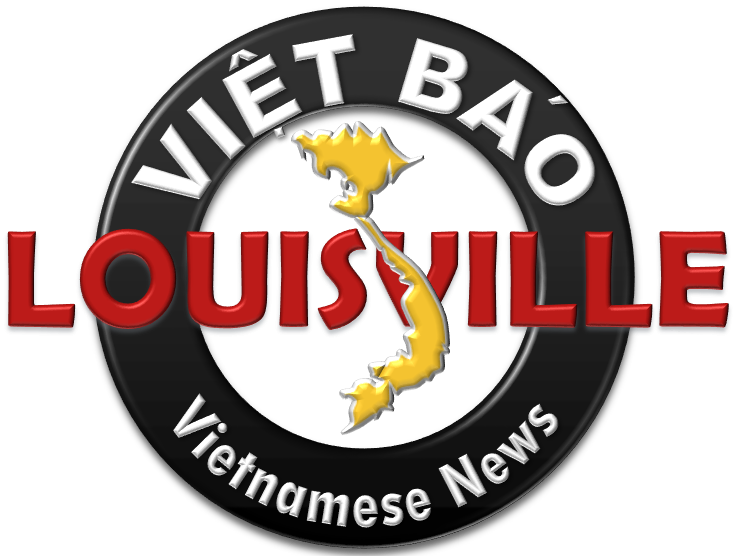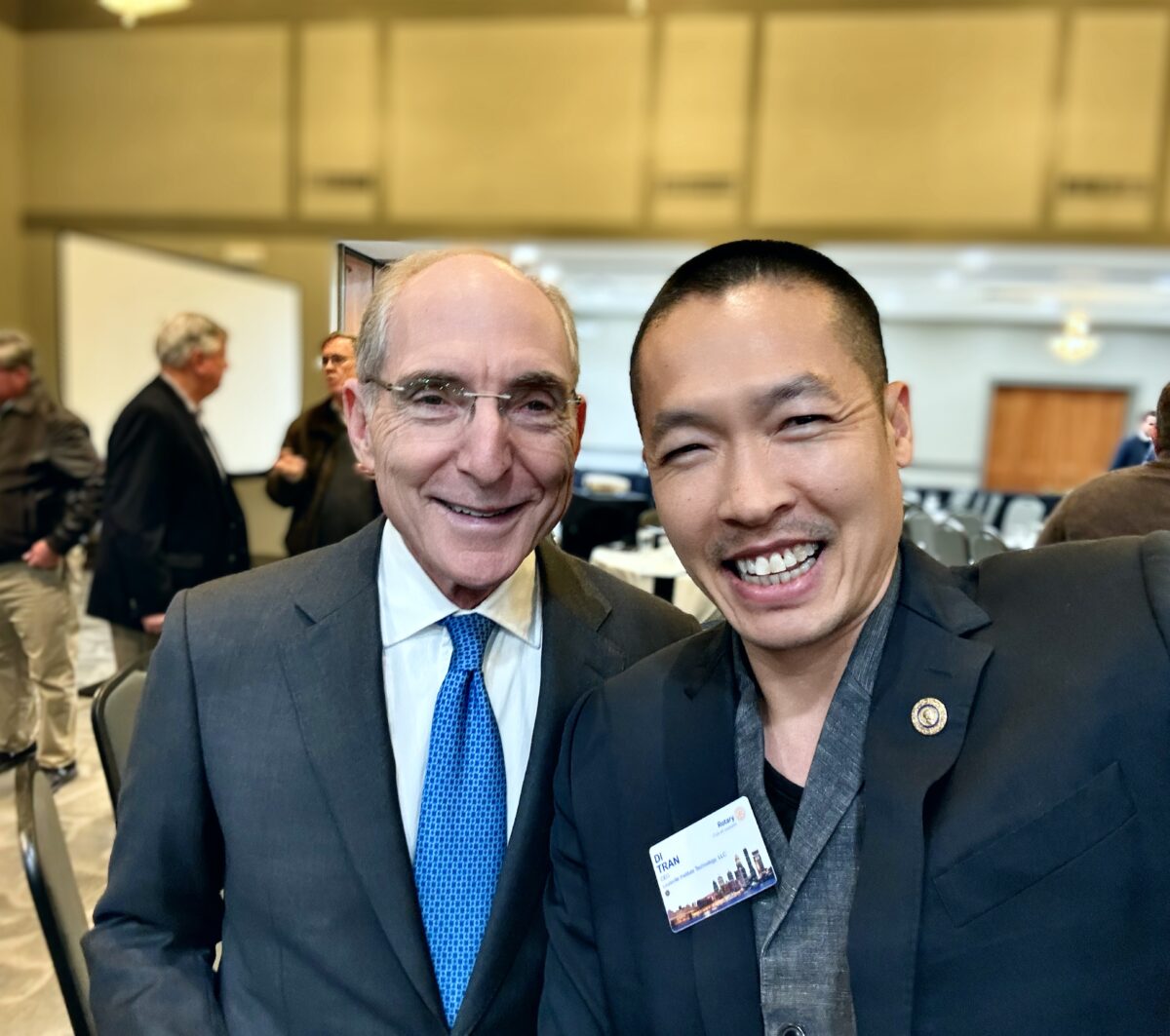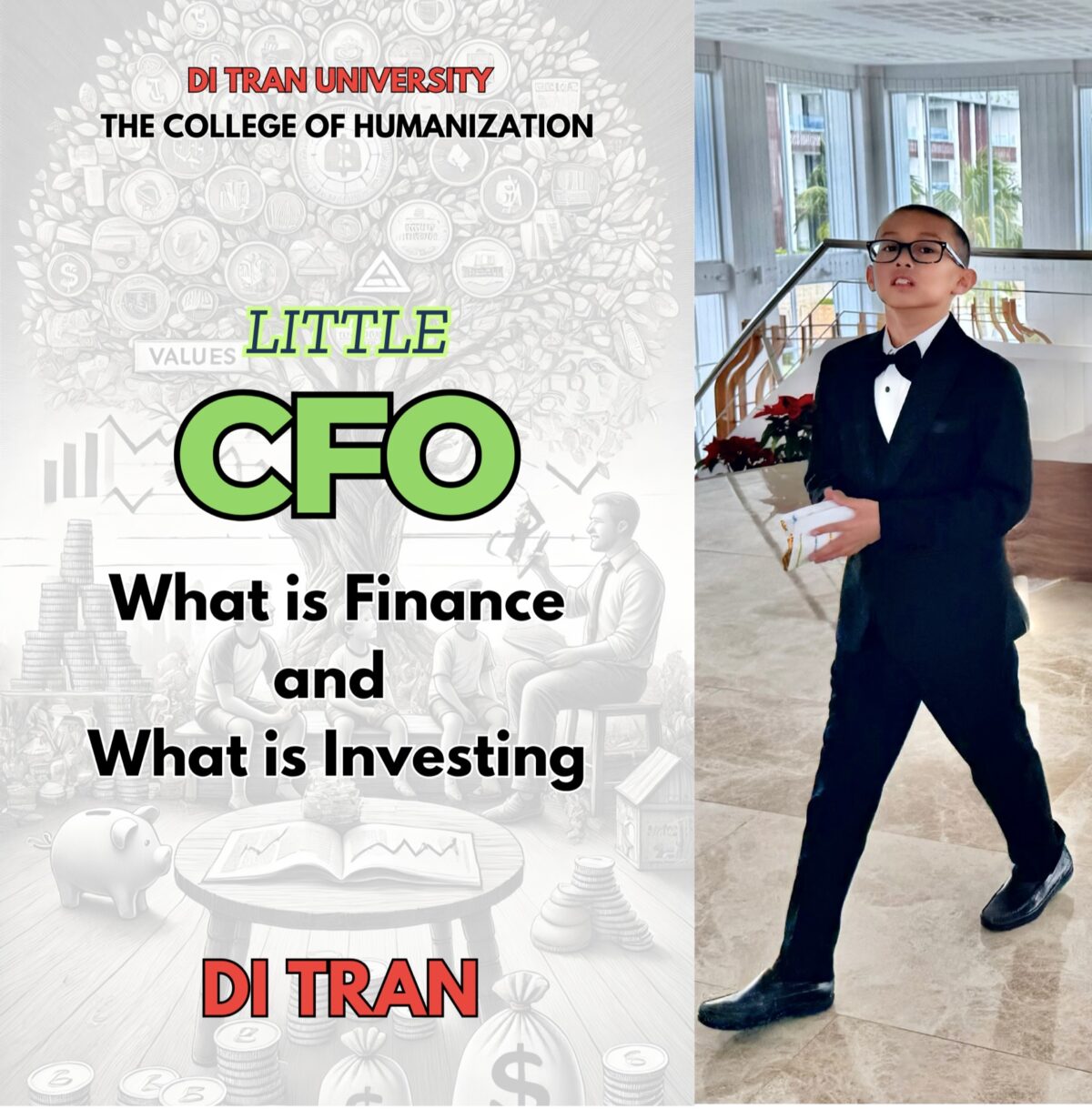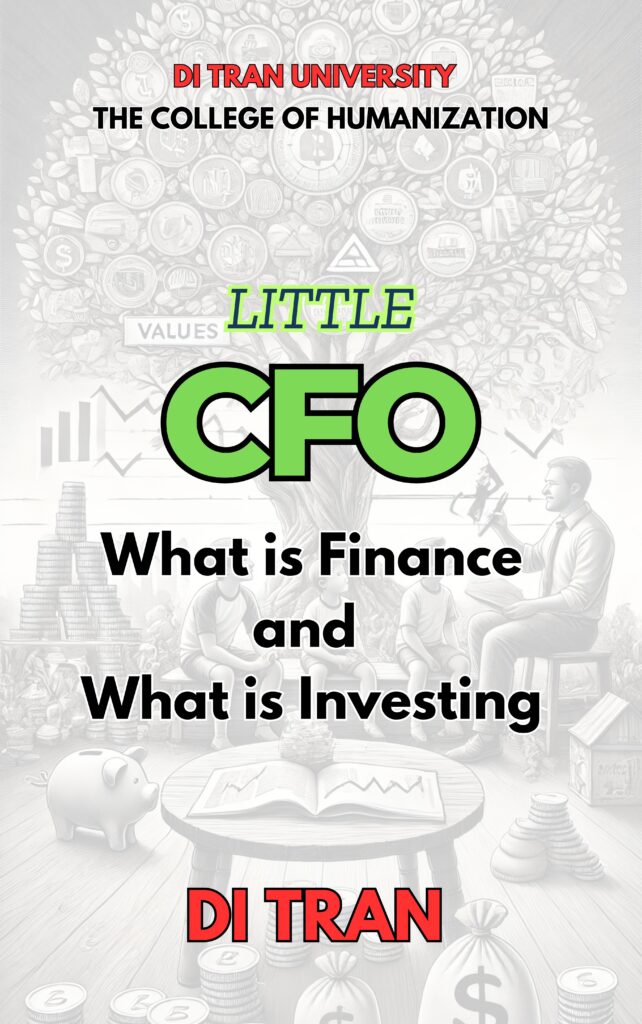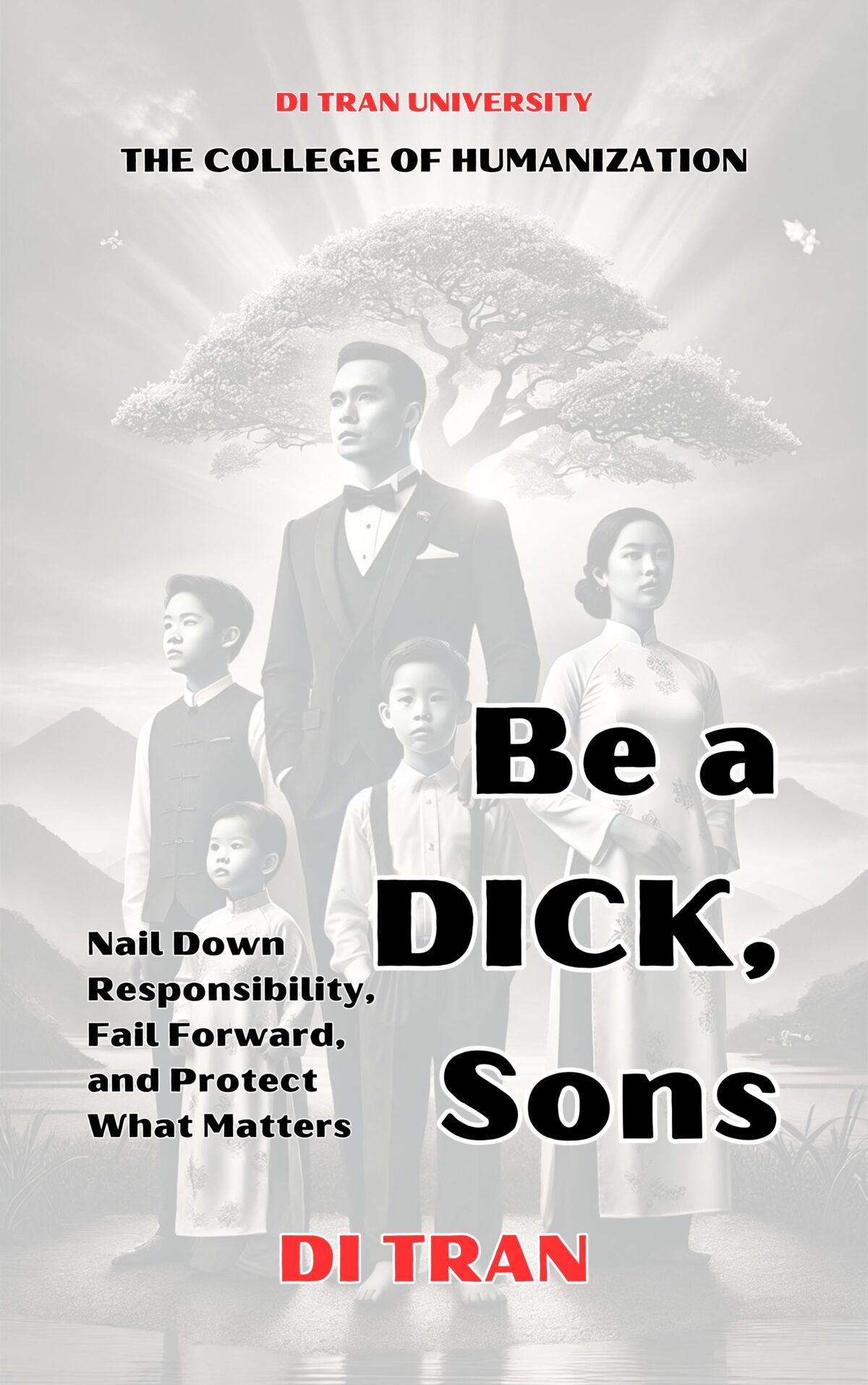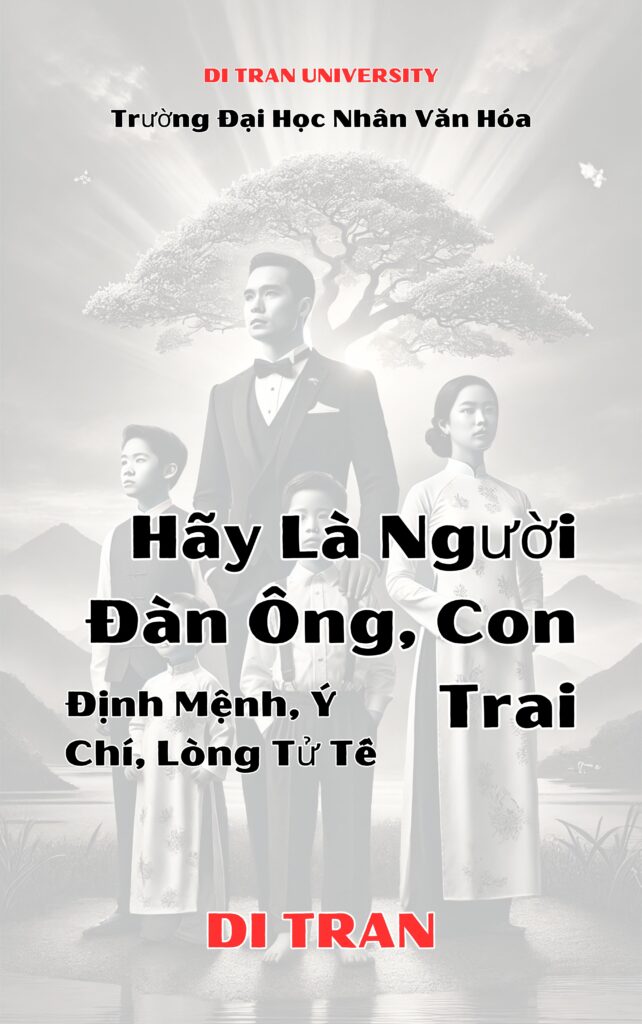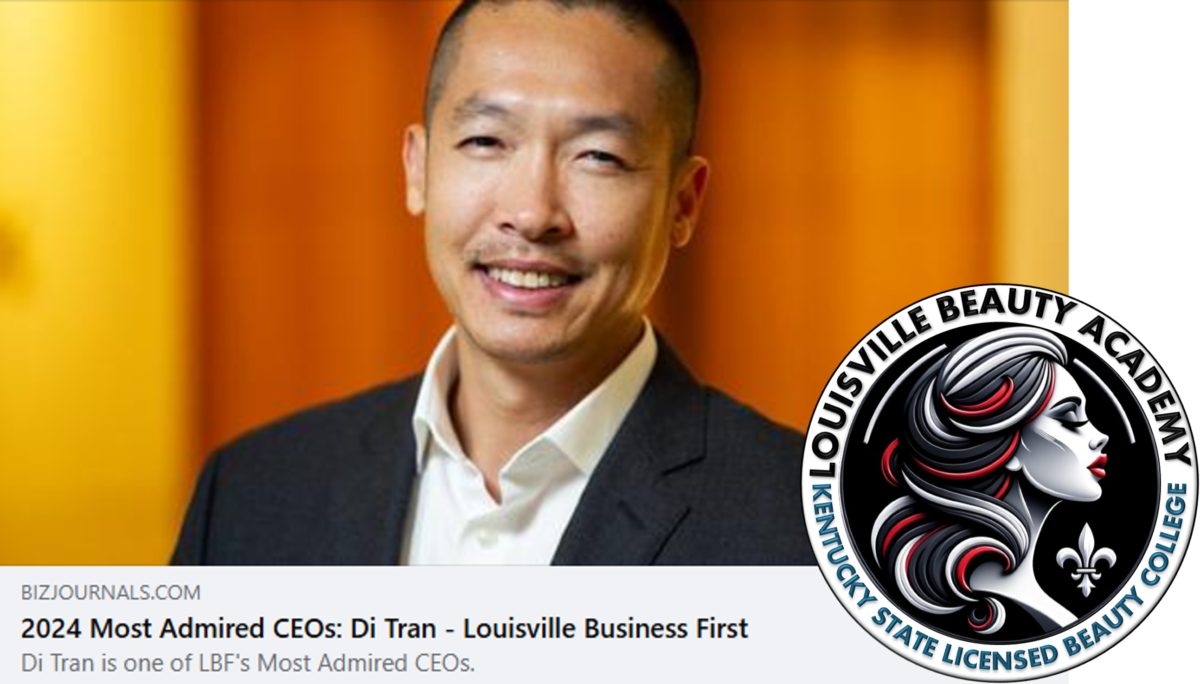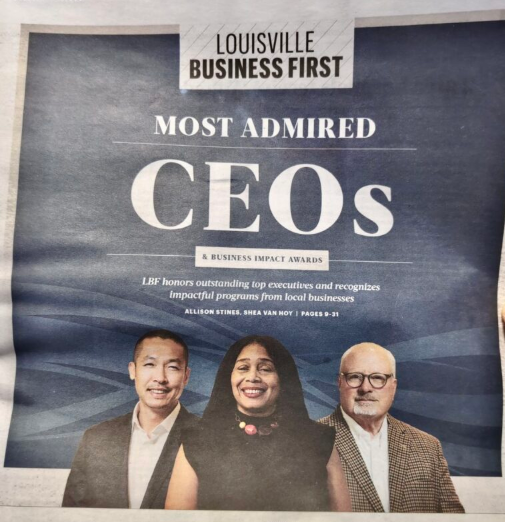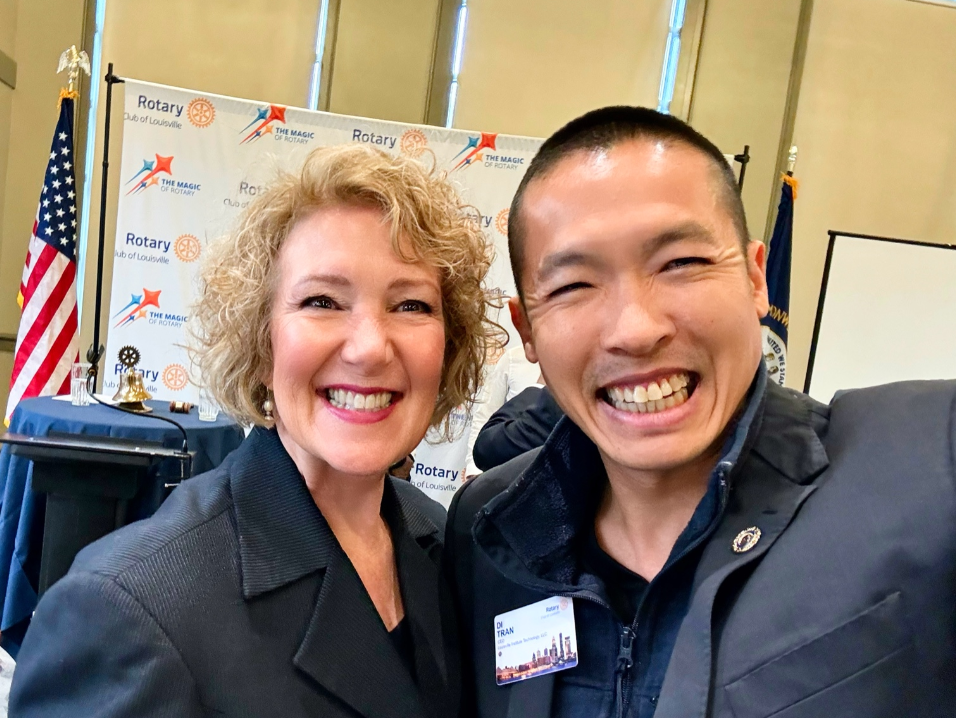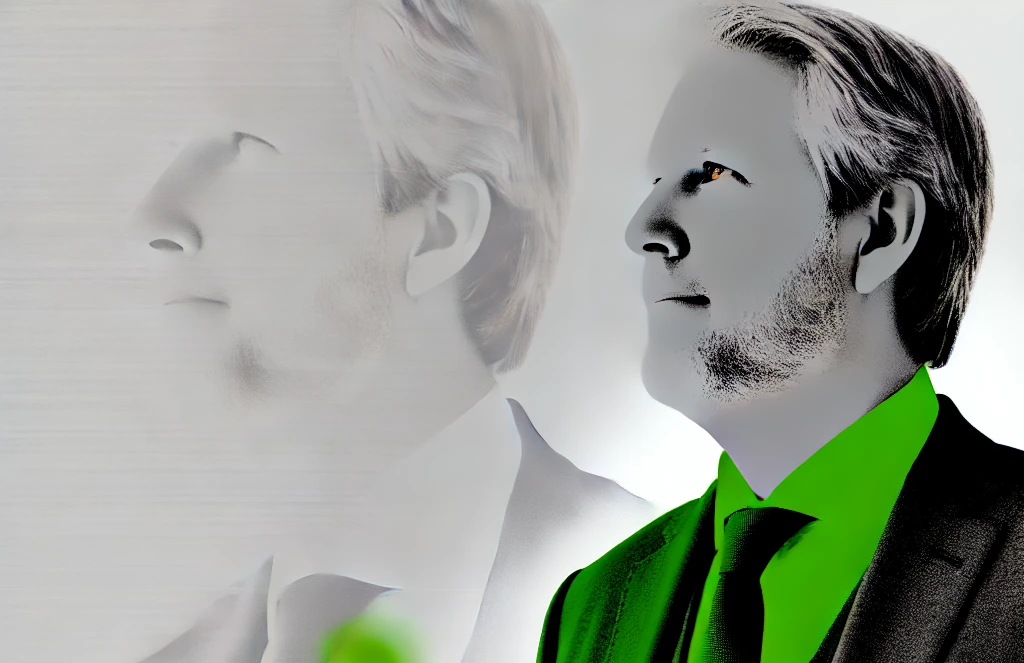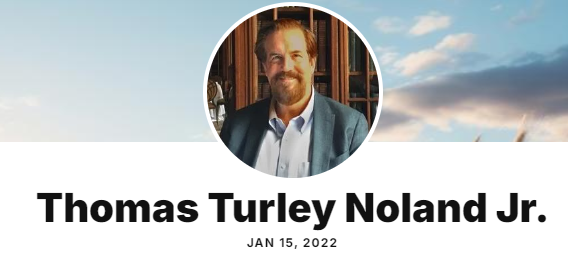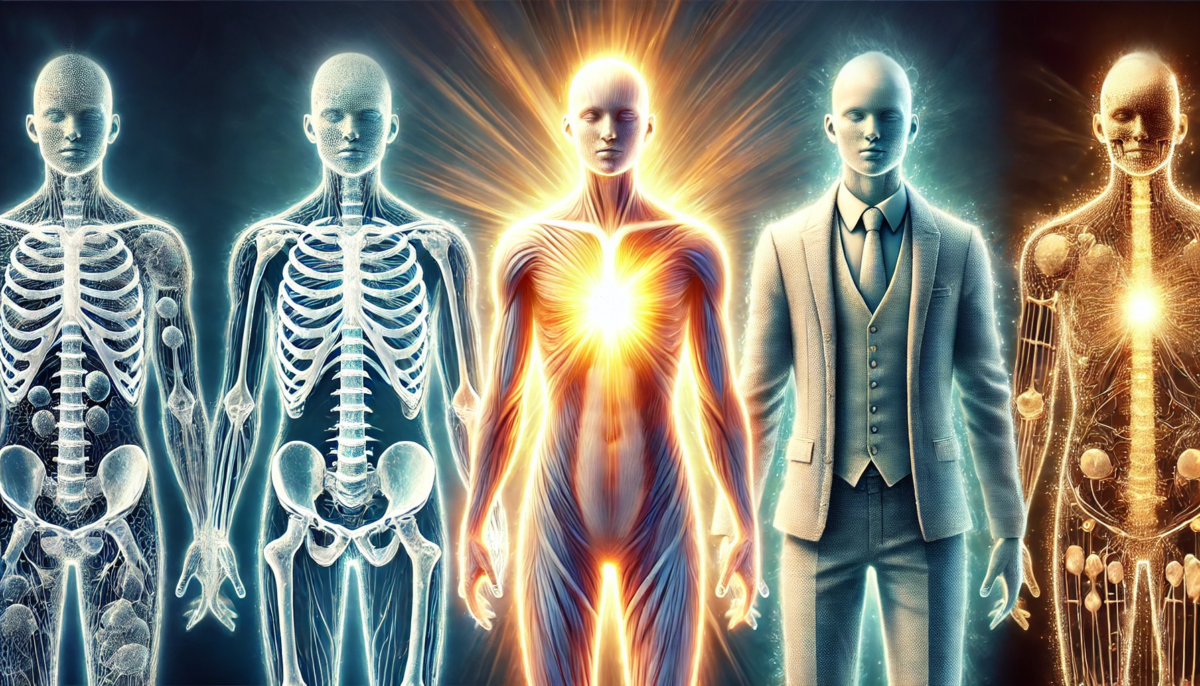Individuals in several U.S. career fields must complete a specified number of clock hours of training to obtain a license. These clock-hour requirements are typically mandated by state licensing boards. When moving to a new state, licensees often seek to transfer their hours or license. Below is a detailed overview of major licensed occupations with clock-hour training requirements, including typical hour requirements, conditions for interstate license transfer (reciprocity or endorsement), examples of state differences, and authoritative references.
Cosmetology (Hairdresser/Cosmetologist)
Typical Hours Required: Most states require around 1,500 hours of schooling for cosmetologists. This can range from as low as 1,000 hours (e.g. New York and Massachusetts require a 1,000-hour training program) up to 2,100+ hours in a few cases (e.g. Iowa mandates 2,100 hours for cosmetologists). The majority of states cluster around 1,500 hours for cosmetology training.
Interstate Transfer (Reciprocity/Endorsement): Cosmetology licenses can be transferred to another state by endorsement or reciprocity if certain conditions are met. Typically, the new state will require that the applicant’s training hours are equal to or greater than its own requirements, and that the applicant passed the requisite exams. If an out-of-state cosmetologist’s training is short of the new state’s hours, they may need to take additional training hours or exams. For example, Florida (which requires 1,200 hours) will endorse a cosmetologist from a 1,000-hour state like New York only if the person completes an extra 200 hours of education or has at least one year of licensed experience and then passes Florida’s exam. Many states impose similar rules: they grant a license by endorsement if your home state’s requirements were “substantially equivalent.” If not, the options are often to make up the hour difference or take the state’s board exams.
Examples of State Policies:
- Alaska: Does not have blanket reciprocity, but will license an out-of-state cosmetologist (hairdresser) by “waiver of examination” if the person holds a current license elsewhere and can prove at least 1,650 hours of school training (or 2,000 hours via apprenticeship), plus passing a written and practical exam. This ensures the applicant’s training meets Alaska’s own 1,650-hour requirement for hairdressers.
- Florida: Requires 1,200 hours for cosmetologists. Florida will endorse licenses from states with equal or greater hours; if the other state had fewer hours (e.g. 1,000 hours), Florida gives the choice of doing additional hours or taking Florida’s exam (with at least 1 year of work experience).
- Iowa: Requires 2,100 hours and has no direct reciprocity agreement. It will consider an applicant for endorsement if they have been licensed in a state with similar/equivalent requirements and have 12+ months of recent work experience. Someone from a lower-hour state would likely need more experience or training.
- New York: Requires 1,000 hours and licenses by endorsement only those who meet its hour requirement. Conversely, a NY-licensed cosmetologist moving to a 1,500-hour state may need to provide proof of additional training or experience since NY’s 1,000 hours fall short of many states’ requirements.
Sources: State licensing boards and industry directories confirm these hour requirements and policies. For instance, the New York Department of State notes the 1,000-hour training requirement for cosmetologists, and Florida’s Board of Cosmetology outlines the endorsement process for those with fewer hours.
Barbering
Typical Hours Required: Barber license requirements are similar to cosmetology in many states, often around 1,000 to 1,500 hours of training. For example, Alabama sets a 1,000-hour minimum for a Class II barber, while many states use 1,500 hours (Texas, Illinois, Georgia, etc. all require ~1,500 hours for barbers). A few states have lower requirements (e.g. Idaho requires only 900 hours for barbers). Some states also allow apprenticeship hours in lieu of school hours (common alternatives are 2,000–3,000 hours of apprenticeship if not attending school).
Interstate Transfer: Licensed barbers generally can transfer licenses via reciprocity/endorsement, but the same principle applies: the training and exam credentials must satisfy the new state’s standards. If the original state’s hour requirement was lower, the barber may need to demonstrate additional experience or take the new state’s barber exam. A number of states use the NIC (National Interstate Council) exam for barbers, which facilitates endorsement if both states use that exam. However, states often require proof of having met their hour minimum.
Examples:
- Idaho: Idaho does not offer direct reciprocity for barbers. An out-of-state barber must apply for endorsement and prove active licensure for 3 of the last 5 years, show they passed equivalent exams, and meet Idaho’s training hours (900 hours). Essentially, Idaho uses work experience in lieu of automatic reciprocity if hours/exams differ.
- Texas: Texas requires 1,500 hours for barbers and will consider out-of-state applicants if they hold a license from a state with comparable training hours (or have enough years of practice). Texas processes barber reciprocity on a case-by-case basis and may require the applicant to take the Texas law and practical exams if their hours or credentials don’t align.
- New York: New York’s barber requirements are unique – the state mandates an apprenticeship (two years) or a training course, rather than a fixed hour count (schools in NY set their own hour programs). A New York-licensed barber moving elsewhere might need to document the length of their training/apprenticeship to satisfy another state’s hour requirement. Conversely, barbers from states with formal school hours may have to show equivalent training to get a NY license.
Sources: State regulatory info confirms the hour requirements (e.g., Alabama’s Board sets 1,000 hours for barbers, Idaho’s laws list 900 hours and their no-reciprocity endorsement process). Texas Department of Licensing & Regulation provides guidelines for out-of-state barber applicants, requiring equivalent 1,500-hour training or additional steps if lacking.
Nail Technician (Manicurist)
Typical Hours Required: Manicurist/Nail Technician training requirements vary widely by state. Many states require 300 to 600 hours of nail technology education. For example, Texas mandates 600 hours of training for a manicurist license. Georgia requires 525 hours (or a longer apprenticeship). On the lower end, Florida requires only 240 hours of training for a nail specialist license, and a few states are even lower – notably Pennsylvania (200 hours) and Massachusetts, which astonishingly requires just 100 hours of manicurist training. (Massachusetts historically had a very low hour requirement for nail techs, set at 100 hours, which is the minimum to qualify for the exam in that state.)
Interstate Transfer: Because of the dramatic differences in required hours, transferring a nail technician license often involves meeting the new state’s hour minimum. Many states will grant a license by endorsement if the applicant’s training hours meet or exceed their requirement. If not, the nail tech may need to take additional coursework or sometimes document work experience to compensate. Some states simply require passing their state law exam and proof of current license, as long as the training was not grossly deficient.
Examples:
- Florida: Florida will register (license) an out-of-state nail specialist by endorsement only if the other state’s requirements are at least 240 hours, equal to Florida’s own training requirement. If an applicant comes from a state with fewer hours, they would not qualify for reciprocity in Florida and might have to take Florida’s exam or complete missing hours.
- Texas: Texas’s 600-hour requirement is relatively high; thus, Texas will expect out-of-state manicurists to have 600 hours of training. If someone trained in a 300-hour state applies, Texas might require them to get additional schooling or show several years of experience. (Texas explicitly lists that applicants from states with substantially equivalent hours and exams can be considered, otherwise additional steps are necessary.)
- Massachusetts: In contrast, Massachusetts’ low 100-hour standard means it will generally accept any licensed manicurist from another state who completed at least 100 hours. Massachusetts does require out-of-state applicants to show their official school transcript and to pass an exam if their hours are below its requirement (100 hours). Practically, almost all states’ licensed nail techs have more than 100 hours, so getting a Massachusetts nail license by endorsement is straightforward for most. However, a Massachusetts-trained manicurist moving elsewhere often faces a deficit – e.g. moving from MA (100 hours) to a state like Connecticut (which requires 300 hours) or Texas (600 hours) means they would likely need to obtain additional training or experience to qualify for a new license.
Sources: Official state boards and published requirements highlight these differences. Texas’s 600-hour requirement is noted by TDLR. Florida’s 240-hour rule for nail specialists is documented in Florida licensing materials. Massachusetts’ regulations confirm the 100-hour training minimum for manicurists. These disparities underscore why reciprocity conditions (like requiring equal or higher hours) are so important in this field.
Esthetician (Skin Care)
Typical Hours Required: Esthetics (facial/skin care) licensing usually requires 600 hours of training in many states. However, the requirements range from about 250 hours up to 1,000 or more. For example, Florida only requires 260 hours for a facial specialist (esthetician) license, one of the lowest requirements in the country. Georgia, by contrast, requires a full 1,000 hours of esthetician training. California and Illinois require 600 hours (which is common). Some states have recently increased their hours – Massachusetts moved from a 300-hour program to 600 hours for estheticians as of 2019. Others fall in between (e.g., New York requires 600 hours; Texas 750 hours; Oregon 500 hours; etc., depending on the state).
Interstate Transfer: Transferring an esthetician license typically requires that the applicant meet the new state’s hourly training requirement. If the original license was from a state with fewer hours, the new state may require the person to obtain additional hours or have a certain amount of work experience. Many states have reciprocity/endorsement provisions for estheticians similar to cosmetology: a current license plus equivalent training and exam will allow licensure, often after passing the new state’s law or theory exam. If training hours are lacking, some states might allow substitution of work experience (e.g., a number of years of practice might waive a small hour deficit).
Examples:
- Georgia: Requires 1,000 hours of training for estheticians. Georgia will only grant a license by endorsement if the other state’s requirements are equal (1000 hours) and the applicant passed a national exam. An esthetician from a 600-hour state would likely need to take Georgia’s exam and possibly document additional work experience or education to make up the gap.
- Florida: With a low 260-hour requirement, Florida’s endorsement is easier in one sense – most licensed estheticians from elsewhere will have more than 260 hours, so they meet Florida’s threshold. Florida does require anyone coming in to have a current license and their training reviewed. (Since Florida uses a registration system for facial specialists, endorsement applicants essentially must show they completed ≥260 hours and passed the exams in their home state.) Conversely, a Florida-trained esthetician (260 hours) moving to a state requiring 600+ hours will often need further schooling. For instance, Tennessee (750 hours required) or South Carolina (450 hours required) might not accept 260 hours without additional coursework or experience.
- Massachusetts: Now requires 600 hours for aestheticians. Massachusetts will demand out-of-state applicants have at least that much training (or if they were licensed under the old 300-hour rule prior to 2019, they are grandfathered locally but other states might not recognize just 300 hours). An out-of-state esthetician with 600 hours and a license can get a MA license fairly easily (with application and perhaps a test on MA law), but one from Florida’s 260-hour program would not qualify without further training. Massachusetts explicitly states that if an applicant’s education is less than the board’s required hours (600 for aesthetics), they must take the MA board exam (and likely do more schooling).
Sources: State board documents and professional associations confirm these figures. The Georgia State Board notes the 1,000-hour requirement for esthetician programs. Florida’s 260-hour requirement is evidenced in Florida Department of Education outlines and state licensing info. Massachusetts’ official regulations list 600 hours as the current standard for aesthetics training. These references illustrate how varied the field is, which directly impacts reciprocity conditions.
Massage Therapy
Typical Hours Required: Massage therapists generally must complete a 500-hour training program at minimum, which aligns with the industry’s entry-level standard and the requirements to sit for the MBLEx (Massage & Bodywork Licensing Exam) in most states. Many states have set 500 hours as the baseline (e.g., California certifies massage therapists at 500 hours; Colorado requires 500 hours; Florida requires 500 hours; Illinois 600 hours). Some states demand more: New York has one of the highest requirements at 1,000 hours of massage training (and a state-specific exam), and a few others range from 600 to 750 hours (for instance, Texas and Ohio require 500; Oregon 625; Washington 625; Pennsylvania 600; Nebraska 1000 for new programs in recent years). Overall, 500 hours is the most common standard, with a trend toward slight increases in some jurisdictions.
Interstate Transfer: Almost all states allow a licensed massage therapist (LMT) to obtain a license in a new state via endorsement, provided the person meets that state’s requirements. Because there is a national exam (MBLEx) and sometimes national certification (NCBTMB), transferring can be straightforward if the therapist’s training hours meet the new state’s minimum and they have passed an equivalent exam. If an LMT comes from a state with fewer hours than the new state requires, they may have to do one of two things: either complete additional training hours before licensure, or in some cases demonstrate a certain amount of work experience in lieu of the hours difference. States often require verifying the school transcript (hours) and the exam results. Some states explicitly insist on the 500-hour minimum even for endorsement. For example, Florida will endorse massage therapists from out of state only if they completed at least a 500-hour approved program and passed a board-approved exam.
Examples:
- Washington State: Requires 500 hours (was considering raising it) and will grant a license to out-of-state applicants who have 500 hours and have passed the MBLEx (or equivalent) – essentially full reciprocity if those conditions are met. If someone has less than 500 hours (rare, since 500 is the usual floor), they would need further education.
- New York: Requires 1,000 hours and has a state exam. New York does not readily offer reciprocity unless the applicant’s credentials match NY’s (meaning 1,000 hours of education and having passed a comparable exam). In practice, an LMT from a 500-hour state must either complete additional schooling to total 1,000 hours or document years of out-of-state practice and then petition to take the NY exam. Because NY’s standard is so high, it often effectively requires re-training or at least a lengthy endorsement process for those from lower-hour states.
- District of Columbia: Requires 500 hours. D.C. will license by endorsement, but the therapist must show proof of completing an approved program and meeting the 500-hour minimum, as well as having passed the national exam. Essentially, D.C. looks for equal or greater training (500+ hours) in the prior jurisdiction.
- California: Uniquely, California’s massage “license” is voluntary certification (500 hours for Massage Therapist title) and they do not have a state-run exam (they accept the MBLEx). Since it’s voluntary, “reciprocity” is not an issue in the same way, but cities/counties in CA often require the 500-hour state certificate. A therapist moving from out-of-state to CA can obtain the California Massage Therapy Council (CAMTC) certification if they have at least 500 hours and a clean background, which many out-of-state programs satisfy.
- Pennsylvania: Requires 600 hours. It will endorse out-of-state LMTs if they meet PA’s 600-hour requirement and have passed the MBLEx. If someone has only 500 hours, they might need to show extra CE or experience, or potentially be asked to get the missing 100 hours. (Pennsylvania’s law allows endorsement applicants to be licensed if they have a current license and completed an approved program that meets PA’s hours or if not, to make up the difference with continuing education or experience, case by case.)
Sources: The Federation of State Massage Therapy Boards (FSMTB) provides an authoritative list of state requirements, confirming that 500 hours is the standard in most places, with specific deviations (NY 1000, OR 625, etc.). State laws (e.g., Florida Statutes for massage therapy) explicitly state the 500-hour minimum for schooling. These sources make clear that while the number of hours can differ, the prevalent model is a 500-hour threshold which greatly eases reciprocity among the majority of states adhering to it.
Real Estate Salesperson
Typical Hours Required: To become a real estate salesperson (agent), states require completion of pre-licensing education measured in clock hours (or sometimes credit hours). Requirements vary significantly: some states mandate as low as 40 hours of coursework (e.g., Massachusetts uses a 40-hour pre-license course), many require around 60–90 hours, and some go much higher. For example: Florida requires 63 hours of pre-license education for sales associates; New York requires 75 hours; Georgia 75 hours; Texas is among the most stringent, requiring 180 hours (six 30-hour courses) for a salesperson license. California requires the equivalent of 135 hours (three 45-hour college-level real estate courses). A few other examples: Colorado currently requires 168 hours (in several course modules); Illinois 75 hours; Pennsylvania 75 hours; Connecticut 60 hours. In short, the education hours span from 40 on the extreme low end to ~180 on the high end, with ~60–90 being common in many states.
Interstate Transfer: Real estate licensing is notably state-specific due to differing laws and practices. There is no universal transfer of pre-licensing hours in the sense of automatically applying credit hours from one state to another. Instead, states handle this via reciprocity agreements or requiring new applicants (even experienced ones) to pass their state’s exam. Some states have reciprocity with specific other states: for example, Connecticut will license by reciprocity if you are licensed in a reciprocal state (like FL, OH, etc.) and passed that state’s exam. Colorado and Virginia have broader reciprocity/recognition policies (Virginia and Texas are cited as having full reciprocity for agents from any state), but even “full reciprocity” usually means you still must apply and possibly take a state law exam. Many states require at least the state-specific portion of the real estate exam for any out-of-state licensee. Pre-licensing hours generally don’t need to be duplicated if moving to a reciprocal state – instead, if the reciprocity applies, the person can skip the education and just take the exam (or in some cases no exam at all). If no reciprocity exists between two states, a licensed agent moving may have to retake the full licensing exam and sometimes even redo the pre-licensing course, depending on the state’s rules.
Examples:
- Reciprocity Agreements: Full reciprocity means a state will accept a license from any other state usually without requiring additional education or exam. Virginia is one such state – it offers licensure by reciprocity to any actively licensed out-of-state agent (requiring an application and a certification of licensure, but no additional course work). Texas, as of recent changes, is also mentioned as having full reciprocity for agents from any state – however, note that Texas historically had no reciprocity and required all newcomers to pass the Texas exam; the reference suggests Texas may allow experienced agents to waive education requirements. Always, the incoming licensee must be in good standing (no discipline) and meet any experience requirement if seeking a broker license.
- Partial reciprocity & Mutual Recognition: Florida has “mutual recognition” agreements with about 8 states (e.g., Georgia, Alabama, Tennessee, etc.). An agent licensed in one of those states can get a Florida license by passing a 40-question Florida law exam, without having to take the 63-hour course. If an agent is from a state not on Florida’s mutual list, they must take the full pre-license course and exam like a new applicant. Georgia recognizes licenses from states that reciprocate with GA (and also allows a non-reciprocal licensed agent to apply for a GA license if they take a shorter 25-hour course and exam).
- No reciprocity states: California and New York are examples of large states that do not offer broad reciprocity. California has no reciprocity at all – everyone must take California’s exam (and meet the education requirements, which in practice means an out-of-state agent will have to show they’ve taken equivalent college-level courses or take them anew). New York has reciprocity only with a handful of states (e.g., Pennsylvania, Connecticut, Oklahoma – and only if the person resides in that state) and otherwise requires the full NY exam.
- Broker vs Salesperson: Often reciprocity is easier at the salesperson level. Broker licenses (which require additional education, e.g., 120–360 hours, and experience) might have separate reciprocity rules. Many states require an out-of-state broker to have a certain number of years of experience before granting a reciprocal broker license. For instance, Connecticut will give a broker license by reciprocity if you have an active broker license elsewhere and a few years’ experience, without needing the 60-hour course, but you must pass the CT state law exam.
In summary, real estate license transfer is less about “transferring hours” and more about transferring the license credential. The pre-license education hours are generally not directly accepted across state lines unless under a reciprocity deal; instead, the fact that you have a license (and presumably took your state’s required hours already) is what helps. States with reciprocity typically waive the new education requirement but still often require an exam on local laws.
Sources: Official real estate commission websites and Realtor® associations detail these policies. For example, the National Association of REALTORS® notes that some states have full reciprocity (Texas, Virginia) and others partial, each with conditions like extra education or exams. State-specific sources: Florida’s mutual recognition rules are in the Florida DBPR publications (and summarized in educational resources); Connecticut’s reciprocity policy is on CT.gov. These confirm that interstate practice is possible but regulated, with requirements that often differ by state.
Certified Nursing Assistant (CNA)
Typical Hours Required: Nurse Aides (CNAs) must complete training that meets federal and state requirements. Federally, the minimum training is 75 hours, including at least 16 hours of supervised clinical practice, as set by 42 CFR 483.152 (from the Omnibus Budget Reconciliation Act requirements). Many states exceed this minimum in their approved CNA programs. Typical state requirements range from 75 hours up to about 120–150 hours. For instance: California requires 150 hours (50 hours classroom + 100 hours clinical); Alaska requires 140 hours (60 didactic + 80 clinical); Connecticut 100 hours (50 classroom + 50 clinical); New York 100 hours (70 classroom + 30 clinical); Texas 100 hours (60 + 40); Arizona 120 hours; Maine 180 hours, and so on. The majority of states require between 75 and 120 hours of CNA training. Every state also requires candidates to pass a competency exam (both a written test and a practical skills test) to become certified and be listed on the state’s Nurse Aide Registry.
Interstate Transfer: CNAs do not exactly “transfer hours” between states, but they can transfer their certification through a process commonly called “reciprocity.” In practical terms, a CNA certified in one state can apply to be listed on the new state’s Nurse Aide Registry without retaking the full course or exam, provided certain conditions are met. Typically, the CNA must have a current, active certification in good standing (no findings of abuse or neglect) and have been originally trained & tested to standards meeting the new state’s minimum. Most states will verify the applicant’s status on the original registry and confirm they completed an approved training program and passed that state’s exam. If the CNA’s original training hours were below the new state’s requirement, the new state may require additional training or even re-testing. However, since the federal floor is 75 hours, and all states meet or exceed that, a CNA moving state-to-state generally faces similar or lower requirements in the new state. The bigger issue is often whether the CNA has worked recently (many states require proof of employment as a CNA for a certain amount of time, such as one full-time week in the last 24 months, to transfer certification without retraining).
Examples:
- Reciprocity Process: A common scenario is filling out an “Application for Enrollment by Reciprocity” with the new state’s Nurse Aide Registry. For example, a CNA moving to Ohio from another state would contact the Ohio Nurse Aide Registry and submit proof of their current certification and employment history. Ohio would check that the person originally had at least 75 hours of training and passed an exam. If yes, Ohio will grant them Ohio certification without testing. Most states handle it similarly: no additional exam or training is needed if all criteria line up.
- State-Specific Quirks: New York will endorse CNAs from out-of-state if they meet NY’s requirements (100 hours training and competency exam). The NY Department of Health specifies in its reciprocity regulation that the out-of-state applicant must have completed a state-approved program meeting at least the federal minimum and passed a state exam. Florida, rather than having reciprocity, requires out-of-state CNAs to apply to test in Florida (unless they have a license from a state Florida considers equivalent; Florida often just has you take their exam). Tennessee is an example of a state with a unique rule: Tennessee accepts reciprocity from all states except Florida. A CNA certified in Florida actually must retest in Tennessee, whereas CNAs from any other state can transfer in without re-testing. This is likely due to differences in Florida’s testing process in the past. It highlights that each state may have specific exclusions or requirements in their reciprocity policy.
- Maintaining Active Status: Many states require that the CNA has worked for pay as a CNA for a minimum amount of time (often one day or a few days of work) in the prior 24 months to transfer. If a CNA has not worked recently, the new state might not grant reciprocity and would ask them to retrain and re-test.
Overall, CNA license (certification) transfer is usually straightforward via reciprocity forms, as long as the individual meets the training hour minimum and has passed a recognized exam. There is no national CNA license, but because all states adhere to federal standards, moving from state to state is common and supported by the reciprocity system.
Sources: The PHI National analysis of state CNA training requirements provides the hour numbers for each state (e.g., CA 150, NY 100, etc.). State health department documents (like New York’s reciprocity rules) and nursing assistant registry guidelines (e.g., IntelyCare’s overview of CNA reciprocity) explain the conditions for transfer. These authoritative sources confirm that while hours differ, the reciprocity mechanism is widely available to avoid retraining CNAs unnecessarily when they move.
Commercial Driver’s License (CDL)
Typical Hours/Training: Obtaining a Commercial Driver’s License is less about clock hours and more about competencies. There is no universal hourly training requirement for a CDL; rather, since February 2022, the Federal Motor Carrier Safety Administration (FMCSA) implemented the Entry-Level Driver Training (ELDT) rule which mandates completion of a prescribed curriculum before taking the CDL skills test. ELDT includes classroom/theory lessons and behind-the-wheel (BTW) driving practice, but importantly, the regulations do not require a minimum number of hours for either the theory or driving portions. Instead, approved training providers must cover all topics in the curriculum, and trainees must demonstrate proficiency (e.g., by passing a written knowledge assessment and instructor evaluations of driving skills).
Despite the lack of a legal hour minimum, many truck driving schools offer standard courses often around 160 hours (approximately 4 weeks) for a Class A CDL, as this has become an industry norm for adequately covering the material and practice. Some states previously had hour suggestions (e.g., 120 or 150 hours), but with ELDT, the focus is on outcomes rather than a set hour count. For instance, one training provider might have a 4-week, 160-hour program, while another might go longer or shorter, but both must ensure all required topics (maneuvers, safety, etc.) are taught and that students can perform to standard.
Interstate Transfer: A CDL is federally standardized, meaning an actual CDL license can be transferred to a new state relatively easily. When a CDL holder moves to another state, they must obtain a new CDL from the state of residence (one cannot hold CDLs in two states). The process is generally an exchange: the driver surrenders the old state’s CDL and is issued the new state’s CDL, usually without any re-testing, since all states recognize the same CDL credentials. There are a few caveats: if the driver has a hazardous materials (HazMat) endorsement, they will need to pass the HazMat knowledge test (and TSA background check) again in the new state, because federal law requires a current test for that endorsement upon license transfer. A few states may also require a vision test or a brief knowledge test when transferring any out-of-state license (commercial or not), but in general a CDL transfer does not involve re-doing the road test or a full retake of exams as long as the license is valid and in good standing.
ELDT and Training Hours Transfer: Since training is recorded in the new Training Provider Registry, once a driver-trainee completes an ELDT course, that completion is federally recognized. For example, if someone takes their CDL training (ELDT) in State A but then moves to State B before testing, State B’s DMV can verify their ELDT completion in the registry. The trainee can then take the CDL skills test in State B without needing to retrain, because the ELDT completion is transferable nationally. The hours or structure of the course don’t matter, only the completion status. Therefore, individuals can “purchase” clock hours of CDL training in one state and use that training to get licensed in another, as long as the training was from an approved provider and the content requirements are met.
Examples:
- A new driver lives near a state border and attends a truck driving school in State X consisting of, say, 160 hours of training. Upon finishing, they receive a certificate and their info is uploaded to the FMCSA database. If they then move or choose to get their CDL in State Y, the State Y DMV will confirm they have completed the required ELDT. The applicant will then take the CDL knowledge and road tests in State Y and, if passed, get a State Y CDL. There is no requirement to match specific hour counts between X and Y, because the training standard is federal and simply requires all topics were covered.
- A licensed CDL driver moving from California to Texas (for example) will go to the Texas DPS, show their current CDL, fill out an application and likely pass a vision test and pay the fee. Texas will check the national CDL database (CDLIS) to ensure the person isn’t licensed elsewhere and will then issue a Texas CDL with the same class and endorsements, after the old license is surrendered. They won’t ask the driver to retrain or re-test (except HazMat as noted). This is uniform due to federal reciprocity of CDL licenses under the Commercial Motor Vehicle Safety Act.
- One nuance: if a CDL holder let their CDL license expire, or was disqualified, then moving won’t magically allow transfer – they would have to start over or comply with whatever reinstatement is required. But an active CDL from any state is honored across all states.
Sources: The FMCSA (federal authority) clearly states that there are no minimum hours required for ELDT – it’s competency-based. This guidance is published on FMCSA’s official website and applies nationwide. In terms of license transfer, state DMV resources and trucking industry sources confirm that transferring a CDL is a paperwork matter, not a training issue – generally no retest is needed for the CDL itself. The NETTTS CDL guide, for instance, notes “Generally, you should not have to re-test for a CDL… If you have endorsements such as HazMat, you may have to re-test for this in the new state.”. This aligns with state DMV guidance (e.g., Tennessee DMV instructing new residents on how to exchange their CDL, etc.). All evidence shows that CDL training is nationally standardized and the license mobility is high once you are licensed.
HVAC Technician/Contractor (Heating, Ventilation, Air Conditioning)
Typical Hours/Requirements: Unlike the other fields, HVAC licensing is usually tied to contractor licenses (for running an HVAC business or working as a journeyman) and often requires a combination of work experience and technical education rather than a set number of purely classroom hours. Many states don’t license HVAC technicians at the state level at all (leaving it to local jurisdictions) or they license HVAC contractors with prerequisites. In states that do have state licensing for HVAC, common requirements are on the order of 2 to 5 years of experience (which equates to roughly 4,000–10,000 hours of on-the-job work) and/or some hours of classroom instruction. For example:
- Massachusetts (Refrigeration Technician license) – requires either 6,000 hours of apprenticeship plus 250 hours of education, or 4,000 hours apprenticeship plus 500 hours education, or 2,000 hours apprenticeship plus 1,000 hours education in an HVAC program. In all cases, a mix of hands-on and school totaling roughly the same overall training time is needed, after which the candidate can take the exam.
- Maryland requires about 3 years of experience for an HVAC contractor license (no specific hour breakdown of education, just time in the trade and an exam).
- Florida requires 4 years of experience or a combination of college (up to 3 years credit for a bachelor’s in engineering) and field work, plus passing a state exam for HVAC contractors. (Florida doesn’t mandate clock-hour courses, but many aspiring contractors take coursework as part of apprenticeships or tech school.)
- Washington State has specific mechanical licensing: e.g., an HVAC/refrigeration specialty electrician license requires 4,000 hours of work experience and 48 hours of classroom training for the 06A HVAC/refrigeration electrician specialty. Another Washington example: a full journey HVAC/refrigeration mechanic might need 8,000 hours of work or a mix of work and schooling as defined by the state’s labor & industries rules.
In summary, there isn’t one uniform “clock hour” requirement nationally for HVAC, but commonly an equivalent of a few thousand hours of combined training (education + practical) is expected to become fully licensed.
Interstate Transfer: HVAC licensing reciprocity is hit-or-miss. Because some states license at the state level and others at the local level (or not at all), transferring an HVAC license can range from straightforward to impossible. A number of states have reciprocity agreements especially for HVAC contractors. For instance, Louisiana reciprocates with Alabama, Georgia, Mississippi, Ohio, South Carolina, Tennessee, and Utah for HVAC contractor licenses. This means if you’re licensed in one of those states, Louisiana will grant you a license without re-examination (though usually you still apply and pay a fee). Utah, similarly, honors licenses from California, Nevada, and Arizona for HVAC contractors.
If no formal reciprocity exists, an HVAC professional moving states often has to apply for a new license and meet all that state’s requirements (experience, exam, etc.). Some states without reciprocity might still “endorse” an out-of-state license on a case-by-case basis: the licensing board may waive some requirements if you show proof of an equivalent license and good standing, but generally, the individual will at least have to take the new state’s trade exam and possibly a business/law exam. Work experience in the field is usually portable (i.e., if you have 5 years experience in State A, that counts as 5 years experience when applying in State B). Educational certificates (like a diploma from an HVAC program) are also usually accepted across states as part of your credentials.
Examples:
- Reciprocal Agreement Example: Alabama has a reciprocal licensing agreement for HVAC contractors with Mississippi, Tennessee, South Carolina, West Virginia, and Louisiana. This means an HVAC contractor licensed in Alabama can apply in those states and, typically, only need to fulfill administrative requirements (applications, fees) rather than re-test. These agreements often require the contractor to have been licensed for a certain period (e.g., at least 1 year) and be in good standing.
- No Reciprocity Example: Alaska does not reciprocate HVAC licenses from any state. An HVAC technician or contractor moving to Alaska would have to meet Alaska’s licensing requirements from scratch (which might include proving years of work experience under a licensed contractor, and passing Alaska’s exam).
- Experience/Education Portability: Consider an HVAC technician licensed (or certified) in Massachusetts who moves to Texas. Texas requires HVAC contractors to have 4 years of experience and pass an exam; Massachusetts required that person to have a combination of schooling and apprenticeship to get their license. When moving, the individual could count their Massachusetts work experience toward Texas’s 4-year requirement. They would likely still have to take the Texas HVAC exam because Texas and MA don’t have reciprocity. However, their clock hours of education (say they did 500 hours of classes in MA) are not directly “transferred” like an academic credit, but that education helped them get licensed and gain experience, which then helps in qualifying for the new license.
- Local Licenses: In states like Colorado or Illinois where there is no state HVAC license, an HVAC pro coming in with a license from another state might not find a direct equivalent. Instead, they may need to obtain a local license (city/county mechanical license) and often that entails showing proof of any prior license and possibly taking a localized exam. Essentially, “transferring” in this case means starting a new application at the local level, sometimes with credit given for an out-of-state license as evidence of competence.
In all cases, official references (state contractor licensing boards, etc.) stress checking with the specific state’s board because rules vary widely. Some states’ licensing boards explicitly list which states they have reciprocity with, as seen in FieldPulse’s HVAC reciprocity chart.
Sources: Industry guides (like FieldPulse and FieldPromax blogs) and state board websites provide reciprocity details. For example, FieldPulse’s compilation shows Louisiana’s reciprocity agreements and similar data for other states. The Huckleberry Insurance state-by-state HVAC guide confirms the Massachusetts mixed hours requirement (education + apprenticeship) and provides references for each state’s criteria (e.g., Washington’s 4,000 hours + 48 hours schooling for certain licenses). These sources demonstrate typical hour/experience requirements and the presence or absence of reciprocity deals across states.
Tattoo Artist (Body Art Practitioner)
Typical Hours Required: Tattoo artist licensing is regulated mostly at the state and local level (often by health departments). Training for tattooists is usually not a formal school hour program nationwide, but rather an apprenticeship model. Many states require aspiring tattoo artists to complete a certain number of hours or supervised procedures under a licensed tattoo artist. For instance:
- Arkansas: requires a minimum 6-month apprenticeship that includes 375 clock hours of supervised tattooing practice (logged by the trainer), as well as completion of courses in bloodborne pathogens, CPR, etc., before one can be licensed.
- Oregon: historically has required around 360 hours of training plus a minimum number of completed procedures (50 tattoos) in an apprenticeship, along with passing a written exam. (Oregon’s is one of the more structured programs, often cited around 360 hours).
- Georgia: just implemented statewide body art regulations (effective 2022) – artists must have a permit, and while Georgia’s new rules focus on health/safety courses, some counties may require a certain duration of apprenticeship (e.g., 12 months) rather than a set hour count.
- Pennsylvania: has no state license (it’s county-regulated) and many counties require an apprenticeship of 1–2 years but don’t specify hours, just that the person is trained and the mentor attests to their proficiency.
- Illinois: requires a course on bloodborne pathogens but no statewide hour requirement – however, an artist must work under a facility that’s licensed, effectively meaning they learn on the job.
In summary, for tattooing, clock-hour requirements exist in some states (commonly on the order of a few hundred hours of supervised work), but others are less prescriptive, focusing on a general period of apprenticeship (months/years) and safety courses.
Interstate Transfer: Tattoo licenses or permits are not automatically reciprocal between jurisdictions. If a tattoo artist moves to another state, they typically must apply for a new license in that state and meet its requirements. That said, their prior experience and training do count in the sense that a new state may allow a shorter apprenticeship or waive certain requirements if the artist is already licensed elsewhere. Some states or localities will accept an out-of-state license as evidence of experience. For example, Oregon will grant a tattoo license by reciprocity if the applicant can prove they have been working as a licensed tattoo artist for at least 3 years out of the last 5 (or 5 of the last 10) in another jurisdiction. This is essentially substituting substantial work experience in place of Oregon’s standard apprenticeship requirement. If they cannot prove that much experience, the artist would likely have to go through Oregon’s normal licensure process (which might include taking Oregon’s exams or doing an Oregon-approved training stint).
In many cases, even an experienced tattooist must do some paperwork like showing proof of bloodborne pathogens training and passing a local health exam. The concept of “transferring hours” is not formalized – it’s more about demonstrating one’s prior training meets the new area’s standards for safety and skill. Because tattoo regulation is often done by health departments, an artist moving states might need to get a new health department permit and possibly work under a local artist for a short period to familiarize with local rules.
Examples:
- Arkansas to Another State: An artist who completed Arkansas’s 375-hour apprenticeship and got licensed moves to, say, Missouri. Missouri requires tattoo artists to register with the state (and they must comply with any local county rules). Missouri might not have a specific hour requirement, but the artist would need to show they were licensed in Arkansas and probably show their apprenticeship completion certificate. Missouri could then license them if they pass a bloodborne pathogens test and pay the fee, etc., essentially honoring the fact that Arkansas trained them (though officially it’s not called reciprocity).
- Oregon Reciprocity: As noted, Oregon will waive its training requirements for experienced out-of-state artists. The example from Oregon’s Health Licensing Office: an artist with 3+ years experience in the last 5 years can get an Oregon tattoo license by showing tax records or other proof of that work, plus passing Oregon’s written exam on tattooing safety and law. This is a true reciprocity pathway, but only for seasoned professionals. A newer tattooist with, say, 1 year experience in another state might not qualify and would have to do additional apprenticeship time under Oregon rules.
- Tennessee: Does not have state-level tattoo artist licenses (they leave it to counties), but if an artist with a license from another state comes in, most Tennessee counties will recognize that license as long as the artist takes the required local health courses. There’s no formal transfer; the artist just applies for a new permit and proves competency (often just showing their portfolio or prior license and paying a fee).
- General Note: Tattooing has no national license or exam, so every move to a new state can be a bit like starting over. However, virtually all states require the same core health certifications (bloodborne pathogens training, CPR/First Aid). Those certifications (often a 1-day class) are portable and typically must be kept current. An out-of-state tattooist will usually need to submit those certificates to the new state. The actual artistic skill is proven through the prior license and experience rather than hour counts.
Sources: State regulations and industry summaries provide detail. Arkansas’s Department of Health outlines the 375-hour apprenticeship requirement. Oregon’s Health Licensing Office regulations (as discussed on professional forums and state sites) describe the reciprocity by experience (3 years out of 5). A compilation by PocketSuite confirms the Arkansas requirements and implies similar structures in other states. Additionally, the Georgia DPH’s new body art rules and various state health department websites (e.g., New Mexico, Iowa, etc.) list their training/apprenticeship mandates. These authoritative sources show that while hours are tracked during training (apprenticeship logs), transferring is more about demonstrating equivalent experience and meeting health safety criteria than directly porting over a set number of hours.
Comparison Table of Key Requirements and Transfer Conditions
To summarize the above information, the table below compares these career fields on their typical training hour requirements and the general possibility of transferring a license to a new state:
| Career Field | Typical Training Hours (Range) | License Transfer to Other States? | Examples of State Requirements & Reciprocity |
|---|---|---|---|
| Cosmetology | ~1500 hours (1000–2100 depending on state) | Yes – via endorsement if new state’s hour minimum is met. Additional hours or exams required if coming from a lower-hour state. | NY: 1000 hrs required. IA: 2100 hrs. Many states demand equal hours for reciprocity. FL: endorses 1000-hr licensees only after +200 hrs or passing exam. AK: needs proof of 1650 hrs or more for endorsement. |
| Barbering | 1000–1500 hours common (some as low as 900) | Yes – endorsement if training is equivalent. Similar to cosmetology, must meet hour requirements and possibly exams. | AL: 1000 hrs Class II barber. ID: 900 hrs, no direct reciprocity (3+ years experience required). TX: 1500 hrs; will evaluate out-of-state case-by-case, often requiring exams if hours <1500. |
| Nail Technician | ~300–600 hours typical (some 100–200 low outliers) | Yes – endorsement possible if prior training ≥ new state’s hours. Otherwise must add hours or re-test. | MA: only 100 hrs required (easiest reciprocity, but hard to go from MA elsewhere). FL: 240 hrs and recognizes others with ≥240 hrs. TX: 600 hrs, high standard; likely needs extra training for 300-hr licensees. |
| Esthetician | ~600 hours in many states (ranges ~250–1000) | Yes – endorsement if training hours are equivalent. Deficits require more schooling or exam. | FL: 260 hrs for facial specialist. GA: 1000 hrs required (expects reciprocity only from 1000-hr states). MA: 600 hrs (was 300); demands 600 for endorsement or else exam. |
| Massage Therapy | ~500 hours standard (500–750 in most; NY 1000 max) | Yes – via endorsement (license by credentials). Must meet new state’s hour minimum (usually 500) and have passed an approved exam (MBLEx or NCBTMB). | Most states: 500-hr programs (e.g., CO 500, FL 500). NY: 1000 hrs, no reciprocity unless 1000 hrs & state exam met. FL & DC: require ≥500 hrs and national exam for endorsement. |
| Real Estate (Sales) | Varies widely: ~40–90 hours in many states; up to 135 (CA) or 180 (TX) | Partial – Some states have reciprocity or mutual recognition; typically must pass new state’s law exam. If no reciprocity, full exam (and possibly education) is required. | MA: 40 hrs pre-license. FL: 63 hrs, mutual recognition with 8 states (law exam only). TX: 180 hrs, no reciprocity (full exam needed). VA: full reciprocity (accepts any state license). CA: 135 hrs, no reciprocity. |
| Certified Nursing Asst (CNA) | 75 hours min (per federal); 75–150+ hours by state (e.g. CA 150, NY 100) | Yes – via reciprocity between state nurse aide registries. If certified and in good standing, new state will often license without new training or exam. | Federal: 75-hr min (16 clinical). CA: 150 hrs (100 clinical). NY: 100 hrs. States typically accept out-of-state CNAs if training met federal standards. TN: accepts all except FL CNAs (those must retest). |
| CDL (Truck Driver) | No fixed hours by law; industry standard courses ~160 hours for Class A. Training must meet ELDT curriculum (no hour minimum). | Yes – CDL licenses are federally uniform. Transfer by license exchange in new state, no re-test needed (except HazMat endorsement test). Training completion is nationally recognized via FMCSA registry. | ELDT: mandated topics but no minimum hours – proficiency-based. Typical school programs ~4 weeks (~160 hrs). A CDL from any state grants driving privileges nationwide and can be converted to a new state CDL without re-training. |
| HVAC Contractor/Tech | No single standard. Often 2–5 years apprenticeship (2000–8000 hrs) plus some classroom (e.g. 144 hrs/yr) is common for journeyman. Some states require specific combinations (e.g. 6000 hrs + 250 edu hrs). | Limited reciprocity. Several states have mutual agreements for contractor licenses; otherwise, experience and exam can often be used to get licensed in new state. No direct transfer of “hours,” but work hours count toward new requirements. | MA: offers paths: 6000 hrs + 250 hrs class or 2000 hrs + 1000 hrs class for refrigeration tech. LA: reciprocity with seven states for HVAC license. Others: many require passing state exam even if licensed elsewhere. |
| Tattoo Artist | Typically learned via apprenticeship (e.g. 6–24 months). Some states quantify ~300–400 supervised hours plus health safety courses (BBP, CPR). | No direct reciprocity in most cases. Must get licensed in new state, but prior experience counts. Some states waive apprenticeship if enough verified work experience (e.g. 3+ years licensed). | AR: min 6-month apprenticeship with 375 hours supervised tattooing. OR: requires 360 hrs + exam (unless 3 years experience for reciprocity). Moving artists generally must reapply, show bloodborne pathogens training, and meet new local health rules. |
Sources: Each of the above fields’ requirements and reciprocity conditions are documented by state licensing boards or authoritative industry organizations. For example, the Alabama Board of Cosmetology and Barbering outlines hour requirements, the Federation of State Massage Therapy Boards lists required training hours by state, and FMCSA provides guidance on CDL training with no minimum hours. State regulatory websites (e.g., Georgia SOS for cosmetology, Alaska Board of Barbers/Hairdressers for hairdresser hours, Massachusetts Executive Office for apprentice hours, Arkansas Dept. of Health for tattoo apprenticeships, etc.) have been used to verify these details. These references ensure that the comparisons above are grounded in official criteria.
Massage Therapy Requirements
American Massage Therapy Association. (n.d.). Credentials for the massage therapy profession. Retrieved from AMTA: https://www.amtamassage.org/state-regulations/credentials-massage-therapy-profession/ fmcsa.dot.gov+5amtamassage.org+5paul-mitchell-schools-website-lightsail.s3.amazonaws.com+5
Healthcare Career College. (2023, April 10). How long is massage therapy school? Retrieved from HealthcareCareerCollege.edu healthcarecareercollege.edu
Massage & Bodywork Licensing Examination Guide. (n.d.). Massage Therapy License Requirements 2025. Retrieved from MBLExGuide.com indeed.com+3mblexguide.com+3paul-mitchell-schools-website-lightsail.s3.amazonaws.com+3
MOST Policy Initiative. (2023, August 1). Massage therapist licensing requirements. Retrieved from MOSTpolicyinitiative.org mostpolicyinitiative.org
Indeed Editorial Team. (2025, June 6). A guide to massage therapist licenses and certifications. Retrieved from Indeed.com insurebodywork.com+7indeed.com+7paul-mitchell-schools-website-lightsail.s3.amazonaws.com+7
LaJames International College. (2024, February 15). Technical requirements for becoming a massage therapist. Retrieved from LaJames.edu lajames.edu
CDL / Entry-Level Driver Training (ELDT)
Federal Motor Carrier Safety Administration. (2022, February 7). Entry-level driver training (ELDT). Retrieved from FMCSA DOT website tpr.fmcsa.dot.gov+8fmcsa.dot.gov+8fmcsa.dot.gov+8
Federal Motor Carrier Safety Administration. (2021, March). ELDT Curricula Summary [PDF]. Retrieved from FMCSA DOT website fmcsa.dot.gov+2tpr.fmcsa.dot.gov+2tpr.fmcsa.dot.gov+2
Cosmetology & Barbering
Alaska Board of Barbers and Hairdressers. (n.d.). Hairdresser license by waiver of examination [FAQ]. Alaska Department of Commerce, Community, and Economic Development. Retrieved from Alaska business licensing site beautyinsuranceplus.com+11commerce.alaska.gov+11commerce.alaska.gov+11
BeautyInsurancePlus. (n.d.). Cosmetology license requirements by state [Web page]. Retrieved from BeautyInsurancePlus.com beautyschoolnetwork.com+8beautyinsuranceplus.com+8beautyinsuranceplus.com+8
Educators of Beauty. (2022, May). State authorization disclosure: Cosmetology [PDF]. Educators of Beauty. proctor2.psionline.com+5educatorsofbeauty.com+5paul-mitchell-schools-website-lightsail.s3.amazonaws.com+5
Paul Mitchell Schools—Nashville. (n.d.). List of state reciprocity requirements—Esthetics [PDF]. Retrieved from PaulMitchellSchools website arkansaspermanentcosmeticsinstitute.com+5paul-mitchell-schools-website-lightsail.s3.amazonaws.com+5paul-mitchell-schools-website-lightsail.s3.amazonaws.com+5
Lenoir Community College. (n.d.). State Barbering/Cosmetology authorization [PDF]. LenoirCC.edu lenoircc.edu+1educatorsofbeauty.com+1
Louisville Beauty Academy. (2025, March). State-by-state cosmetology license transfer guide [Web page]. Louisville Beauty Academy. elitebeautysociety.com+2louisvillebeautyacademy.net+2sos.ga.gov+2
Esthetician
ASCP Skincare. (n.d.). Georgia esthetician schools [Web page]. Associated Skin Care Professionals. estheticianedu.org+2ascpskincare.com+2cosmetologyguru.com+2
BeautyInsurancePlus. (n.d.). Esthetician license requirements by state [Web page]. Retrieved from BeautyInsurancePlus.com beautyinsuranceplus.com+1beautyinsuranceplus.com+1
Georgia Secretary of State. (n.d.). Endorsement instructions for estheticians [How-to guide]. healthy.arkansas.gov+15sos.ga.gov+15beautyinsuranceplus.com+15
CosmetologyGuru.com. (n.d.). Georgia esthetician state board exam: Practice test & info [Web page]. reddit.com+7cosmetologyguru.com+7commerce.alaska.gov+7
Tattoo / Body Art
Arkansas Department of Health. (n.d.). Body art artist licensing – FAQs & trainee requirements [PDF & webpage]. Retrieved from Arkansas Dept. of Health onetonline.org+3healthy.arkansas.gov+3arkansastattooingandbodypiercinginstitute.com+3
WetTattoo. (n.d.). Tattoo license laws by state [Web page]. wettattoo.com
TattooSchool.com. (n.d.). Ultimate guide: Licensed tattoo artist in Arkansas [Web page]. tattooschool.com
Brickhouse Body Art Institute. (n.d.). Tattoo program overview [Web page]. BBAI. arkansastattooingandbodypiercinginstitute.com
O*NET OnLine. (n.d.). License: Body art artist (tattoo and body piercer) [Web page]. onetonline.org
✅ Gist of the Research: Clock-Hour Licensing Careers & State-to-State Transfer
The research covers major licensed careers in the U.S. that require “clock hours” of training (i.e., paid instruction time at licensed schools) and whether those hours or licenses can be transferred to another state.
🧠 Key Takeaways:
1. Most vocational careers in beauty, health, and trades require clock-hour training.
Examples include:
- Cosmetology (1,000–2,100 hours)
- Nails (100–600 hours)
- Esthetics (250–1,000 hours)
- Massage therapy (500+ hours)
- CDL/truck driving (typically ~160 hours, though federally standards-based, not hour-based)
- CNA (75–150+ hours)
- Tattooing (typically 300–400 supervised hours)
- Real Estate (40–180 hours, depending on state)
- HVAC (2,000–8,000+ work/training hours depending on license level)
2. Transferring hours or licenses between states is possible—but not guaranteed.
- Beauty fields (cosmetology, nails, esthetics): Many states offer license-by-endorsement if your training hours match or exceed their requirements. Otherwise, you may need more training or experience.
- CNA & CDL: These are federally standardized and very transferable. Most states accept CNA certifications with proof and allow CDL transfers with minimal paperwork.
- Massage Therapy & Tattoo: Often require meeting a minimum hour threshold (typically 500+ for massage; 300–400 for tattoo apprenticeships) and showing experience or passing an exam.
- Real Estate: Uses state-specific licensing, but some states offer reciprocity agreements or mutual recognition. If not, you must take new pre-license courses and pass a local exam.
- HVAC & Skilled Trades: Often require work hours + classroom hours. Transfer is limited—some states have reciprocity for licensed contractors, but many require new exams or applications.
3. Most states do NOT accept fewer hours than their minimum.
If you trained in a lower-hour state and move to a higher-hour state, you will likely need:
- Additional school hours
- Verified work experience
- To re-take a licensing exam
4. Some states are known for low requirements, others for high.
Examples:
- Low-hour states: Massachusetts (100 hours nails), Florida (260 hours esthetics)
- High-hour states: Georgia (1,000 hours esthetics), Iowa (2,100 hours cosmetology), New York (1,000 hours massage)
📌 Practical Advice:
If you’re considering moving after training:
- Train in a high-hour state to maximize portability.
- Keep transcripts and licenses well-documented.
- Verify transfer policies with the licensing board of the destination state.
🔗 Gist for Louisville Beauty Academy (LBA) Strategy:
LBA’s focus on state-licensed and state-accredited, hour programs (300–1,500+) makes it a strong base for transferable credentials. Its students are better positioned to move out-of-state and still meet or exceed licensing requirements in other jurisdictions—especially in nails, esthetics, cosmetology, and shampoo/styling.
